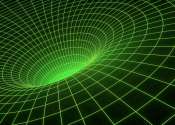Removing complexity layers from the universe's creation
Complicated statistical behaviour observed in complex systems such as early universe can often be understood if it is broken down into simpler ones. Two physicists, Petr Jizba (currently affiliated with the Czech Technical ...





